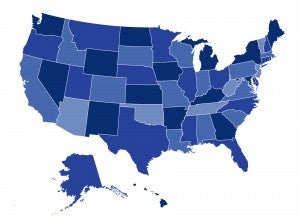
By Justin Giovannelli and Kevin Lucia
This week the Affordable Care Act’s health insurance marketplaces are back in the spotlight. On September 29, the directors of six state-run marketplaces will testify before Congress about the viability and sustainability of their exchanges. Of particular focus will be these states’ eligibility and enrollment systems, and some of the ongoing technical problems they’re facing. Two of the directors testifying come from states – Oregon and Hawaii – that used state technology for eligibility and enrollment at the outset, but chose to shift to Healthcare.gov after early IT stumbles.
States have always had choices to make when it comes to implementing the Affordable Care Act’s health insurance marketplaces. At the threshold, they’ve had to decide whether to create their own exchange or leave that responsibility to the federal government. Over time, those basic options have been supplemented by additional implementation models that bridge the gap between the two. These newer marketplace models promote shared responsibility by states and the federal government over exchange operations and have been attractive to policymakers seeking flexibility to tailor their involvement with their marketplaces.
Interest in alternative approaches has grown especially as states gain experience with marketplace operations, and as federal financial support for implementation has dried up. Many states want to maximize their influence over their insurance markets and exercise authority over the exchanges, but are concerned about the financial risks of running an exchange. Policymakers have thus sought to understand, in particular, the experiences of states that created their own marketplaces but have worked with the federal government to operate them.
In a new issue brief for The Commonwealth Fund, Justin Giovannelli and Kevin Lucia describe the operations of these “federally supported state-based marketplaces.” Drawing on discussions with policymakers, insurers, and brokers in the four states that have so far used this model—Idaho, Nevada, New Mexico, and Oregon—they examine how these marketplaces perform critical functions and explore the advantages and limitations of this approach for consumers and other stakeholders. You can read the brief here.

